 |
KeysKey to families within the Auchenorrhyncha This is a modifed version of the key found in Unwin, D. (2001) A Key to the Families of British Bugs (Insecta, Hemiptera). Field Studies Council AIDGAP Guides 269. |
1. Pronotum large and extended backwards (a), head and front of pronotum forming an almost vertical angle
|
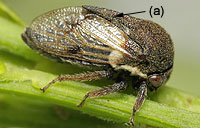 (Membracidae) |
2. Very large (c 20 mm), front femur swollen and much wider than mid and hind femora (a)
|
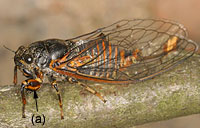 (Cicadidae) |
3. Hind tibia with large
spine (a), antenna inserted below the eye, with the lower margin of the
eye hollowed out to accomodate it (b)
|
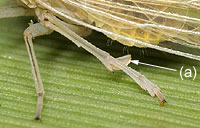 (Delphacidae) |
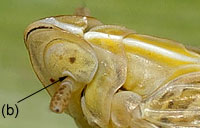 (Delphacidae) |
4. Forewings very broad near the centre with numerous cross-veins throughout
|
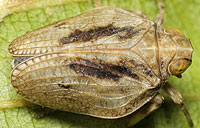 (Issidae) |
5. Base of forewings covered by tegula (a), (b)
|
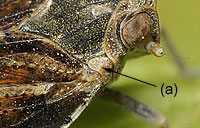 |
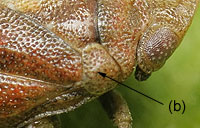 |
6. Scutellum with 3 or 5 keels (a), forewings clear and membranous with conspicuous veins
|
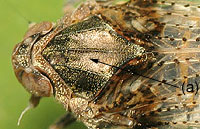 (Cixiidae) |
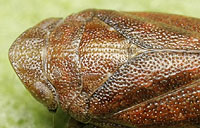 (Tettigometridae) |
| 7. Hind tibia with one to three rows of spines along entire length (a) (NOTE: these are poorly developed in Ledrinae and Ulopinae - see key below)
|
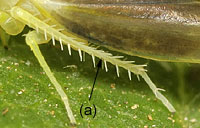 (Cicadellidae) |
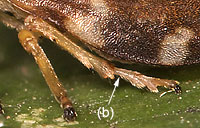 |
8. Forewing red and black, head narrower than pronotum
|
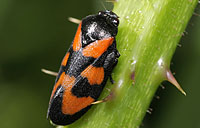 (Cercopidae) |
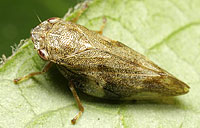 (Aphrophoridae) |
|
Key to subfamilies within the Cicadellidae (leafhoppers) This is a modifed version of the key found in Biedermann, R. & Niedringhaus, R. (2009) The Plant- and Leafhoppers of Germany – Identification key to all species. Wissenschaftlich Akademischer Buchvertrieb-Fründ, Scheeßel. |
1. Pronotum with prominent ear-like projections (a), hind tibia strongly flattened (b), large greyish species (13-18 mm)
|
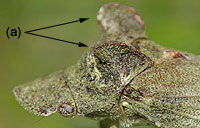 (Ledrinae) |
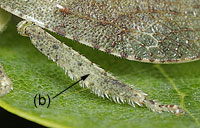 (Ledrinae) |
2. Forewings covered with large distinct punctures, hind tibia with poorly-developed spines (a)
|
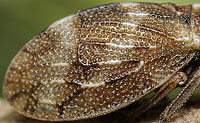 (Ulopinae) |
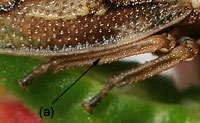 (Ulopinae) |
3. Always macropterous
(fully-winged), with veins of the forewing not branched in the
basal two-thirds. Small and delicate species, size < 5.0 mm
|
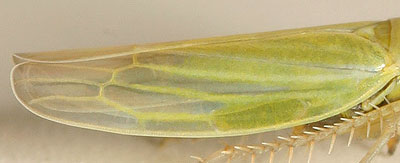 (Typhlocybinae) |
- Macropterous or brachypterous (partly-winged), if macropterous then veins of forewing branching in the basal two-thirds
|
 |
4. Two prominent keels on the face and vertex, joining to form an X shape
|
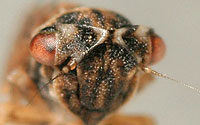 (Megophthalminae) |
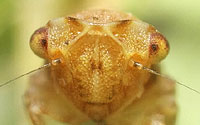 (Megophthalminae) |
5. Vertex greatly expanded (more than twice as long as pronotum), enclosing the eyes and with a prominent longitudinal keel (a)
|
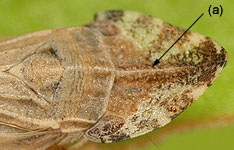 (Dorycephalinae) |
6. Ocelli on vertex or transition between vertex and face (a)
|
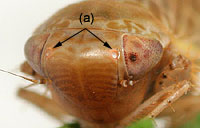 |
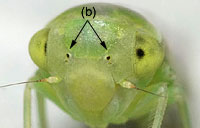 |
7. Face bulbous and swollen, large species (> 5 mm) and usually brightly-coloured. Ocelli on vertex (a)
|
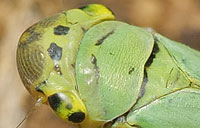 (Cicadellinae) |
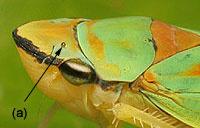 (Cicadellinae) |
8. Distinct keels above the bases of the antennae (a), ocelli on vertex (just behind the front margin)
|
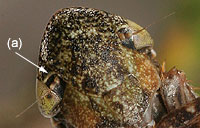 (Aphrodinae) |
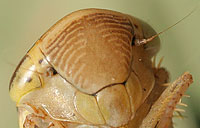 (Deltocephalinae) |
9. Forewings with a wide membrane at tip (a), two prominent sutures on face running from base of antennae almost to ocelli (b)
|
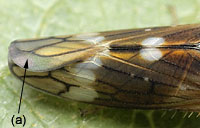 (Idiocerinae) |
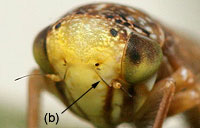 (Idiocerinae) |
10. Sides of pronotum as long as posterior margin of eye, tip of mid and hind femora bears 3 or 5 spines (a)
|
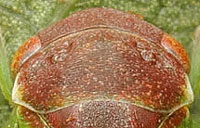 (Iassinae) |
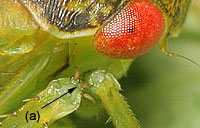 (Iassinae) |
11. Supraantennal keels reaching the eye (a)
|
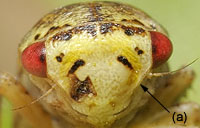 (Macropsinae) |
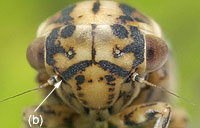 (Agallinae) |